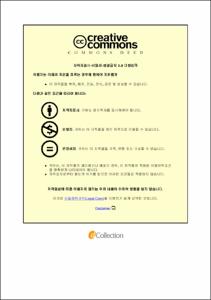주효과 분석을 통한 AZ61 마그네슘 합금 마찰교반용접의 기계적 특성 평가
- Alternative Title
- Evaluation on Mechanical Properties of Friction Stir Welding of AZ61 Magnesium Alloy through Analysis of Main Effect
- Abstract
- Recently, as interest in lightweight materials has increased, research on welding technology of lightweight materials has also become more important. In this study, Friction Stir Welding(FSW) was applied to AZ61 magnesium alloys and the effects of process variables on the mechanical properties of welds were investigated. In order to quantitatively analyze the results of the experiments, experiments were carried out using one of the experimental design methods, 3k factorial design. Through the analysis of variance and statistical estimation, the correlation of each process variable and the optimal process variable combination were derived.
The material used for the experiment was a thin plate of 2mm×100mm×150mm (Thickness×Width×Length), and friction stir welding was performed by a butt welding method. In the 3k factorial design, the characteristic values were selected as the tensile strength of the welded part, process parameters were selected as the travel speed, rotation speed, and shoulder diameter of the tool. The level of each parameters is the same at three levels.
As a result of the examination of the welding surface and the cross section of the welded part, it was confirmed that welding defect did not occur.
And, as a result of the analysis of variance, all the parameters selected in the experiment had a significant effect on the tensile strength of the weld, and no interactions were detected. And, the influence of process parameters on the tensile strength of welds was confirmed in order of rotation speed, shoulder diameter, and travel speed of the tool.
As a result of the analysis of main effect, it was estimated that the highest tensile strength was obtained when the level of travel speed was 2, the level of rotation speed was 1, and level of the shoulder diameter was 1, and it was estimated to have a tensile strength of 263.82±12.35MPa in the 95% confidence interval. And the results of the three verification experiments also exist within the 95% confidence intervals.
Lastly, as a result of hardness measurement under the condition that the tensile strength was the highest and the tensile strength was the lowest, The SZ hardness at the highest tensile strength condition was about 98% of the base material, and SZ hardness at the lowest tensile strength condition was about 90% of the base material.
- Issued Date
- 2019
- Awarded Date
- 2019. 2
- Type
- Dissertation
- Publisher
- 부경대학교
- Alternative Author(s)
- Jae sung Park
- Affiliation
- 부경대학교 대학원
- Department
- 대학원 기계공학과
- Advisor
- 강대민
- Table Of Contents
- 1. 서 론 1
1.1 연구배경 및 연구동향 1
1.2 연구목적 5
2. 이론적 배경 6
2.1 AZ61 마그네슘 합금의 특성 6
2.2 마찰교반용접의 원리 8
2.3 삼원배치법 및 분산분석 11
3. 실험방법 14
3.1 마찰교반용접 실험 14
3.1.1 시험편 14
3.1.2 실험방법 및 장비 16
3.2 인장시험 23
3.2.1 인장시험편 23
3.2.2 시험방법 및 장비 25
3.3 용접부 횡단면 검사 및 경도측정 26
3.3.1 횡단면시험편 26
3.3.2 시험방법 및 장비 27
4. 결과 및 고찰 29
4.1 용접부 표면 및 횡단면 육안검사 29
4.2 인장강도 분산분석 및 최적공정조건 추정 37
4.2.1 인장시험 결과 37
4.2.2 분산분석 및 최적공정조건 추정 42
4.3 용접부 횡단면 경도 측정 51
5. 결론 54
참고문헌 56
- Degree
- Master
- Files in This Item:
-
-
Download
 주효과 분석을 통한 AZ61 마그네슘 합금 마찰교반용접의 기계적 특성 평가.pdf
기타 데이터 / 1.96 MB / Adobe PDF
주효과 분석을 통한 AZ61 마그네슘 합금 마찰교반용접의 기계적 특성 평가.pdf
기타 데이터 / 1.96 MB / Adobe PDF
-
Items in Repository are protected by copyright, with all rights reserved, unless otherwise indicated.